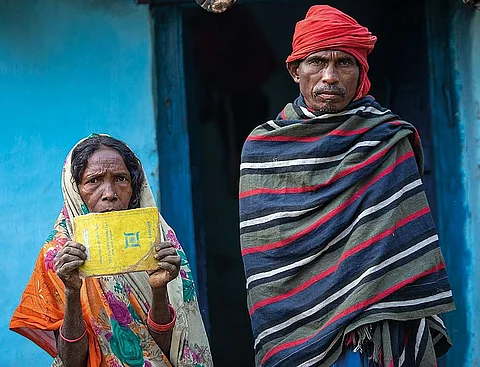

Food subsidies have doubled in 2023 compared to 2019, before COVID-19, according to the Economic Survey 2024-25 tabled in Parliament on January 31, 2025.
The document noted that the Central Agricultural Subsidy Bill increased from 0.5 per cent to 1 per cent of the Gross Domestic Product (GDP) between FY 2018-2019 and 2022-2023. This was ever since the food subsidy was increased as an emergency government intervention due to the COVID-19 pandemic, which was later subsumed under the Pradhan Mantri Garib Kalyan Anna Yojana.
Agricultural subsidies are one of the most important policy interventions in the larger framework of the government’s social schemes. In the financial year 2022-23, the central government spent 6.5 per cent of its budget on the Pradhan Mantri Garib Kalyan Anna Yojana under fertiliser subsidy and food security programmes.
The survey quotes data from the National Statistical Organisation (NSO) 2022-23 to show that many households are currently receiving subsidies through schemes such as the Public Distribution System (PDS) and the Pradhan Mantri Garib Kalyan Anna Yojana—be it in the form of price support or fertiliser subsidies.
Under the National Food Security Act, about two-thirds of the total population of Census 2011 has been provided food grains free of cost. According to the Economic Survey, 84 per cent of households had a ration card in FY 2022-23, out of which 59 per cent of the households had their cards listed under Below Poverty Line (BPL), Antyodaya Anna Yojana, or Priority Family (PHH).
After adding the estimated prices of items being given free of cost through various social welfare schemes, the average monthly per capita consumption expenditure has increased. In 2023-24, the average monthly per capita expenditure (MPCE) in rural areas was estimated at Rs 4,122 and Rs 6,996 in cities. But after adding the value of goods received through various social welfare schemes, these figures increased to Rs 2,247 for rural areas and Rs 7,078 for urban areas.
The Economic Survey stated that there has been a difference in monthly expenditure in urban and rural areas. Where earlier MPCE was 84 per cent in 2011-12, it declined to 71 per cent in 2022-23 and further reduced to 70 per cent in 2023-24. It has been said that this shows that consumption in rural areas is increasing steadily. Between 2022-23 and 2023-24, the highest increase in average MPCE was from 5 to 10 per cent of the population from the bottom of both rural and urban areas. The bottom 5 per cent of the rural population saw an increase of 22 per cent, while the MPCE of the same category of urban people increased by 19 per cent.
The Economic Survey stated that the benefit of the Public Distribution Scheme has been more to the poor and economically weaker sections. There has been an increase in the average PDS benefit in 2022-23 as compared to FY 2011-12. The analysis shows that the impact has been greater in low-consumption groups. In the year 2022-23, the benefit of subsidy in the rural sector was 7 per cent for the bottom 20 per cent consumers, while the top 20 per cent consumers got only 2 per cent. The same trend was observed in urban areas.
The Economic Survey points out that the Gini coefficient (a statistical method of measuring inequality in the distribution of income or wealth) has improved for rural areas, decreasing from 0.266 in 2022-23 to 0.237 in 2023-24. In urban areas too, it decreased from 0.314 to 0.284. However, the increase in kharif production has also been attributed to the improvement in the rural economy.